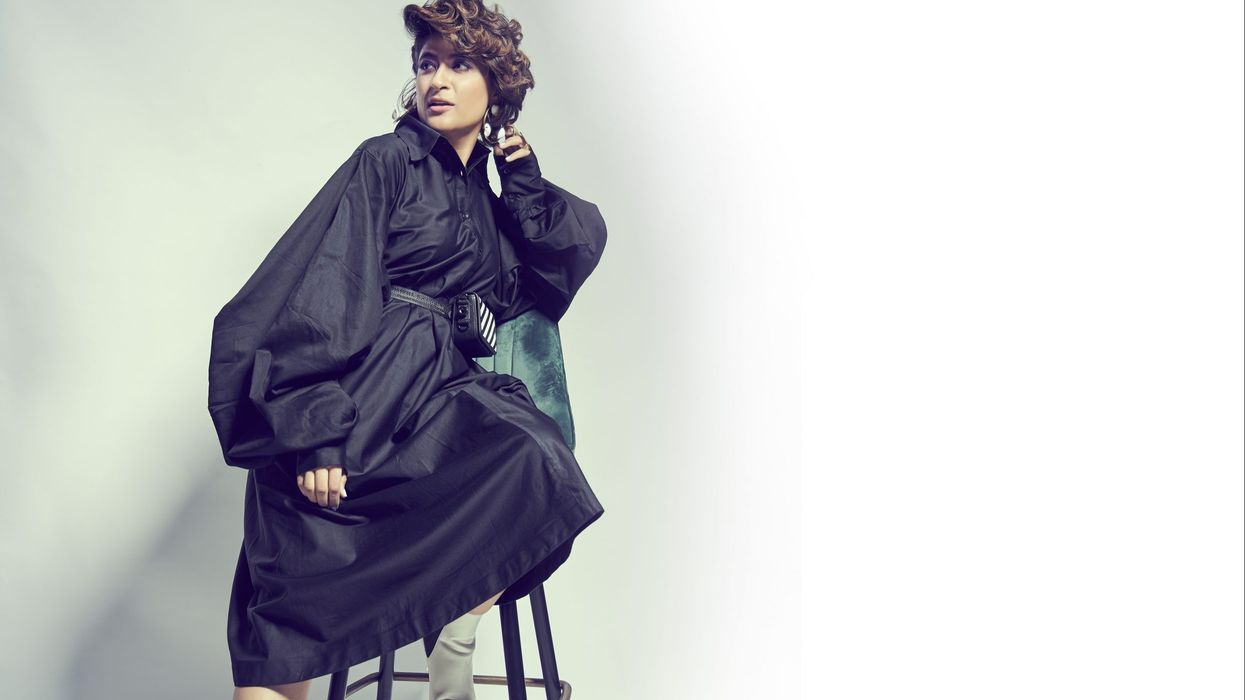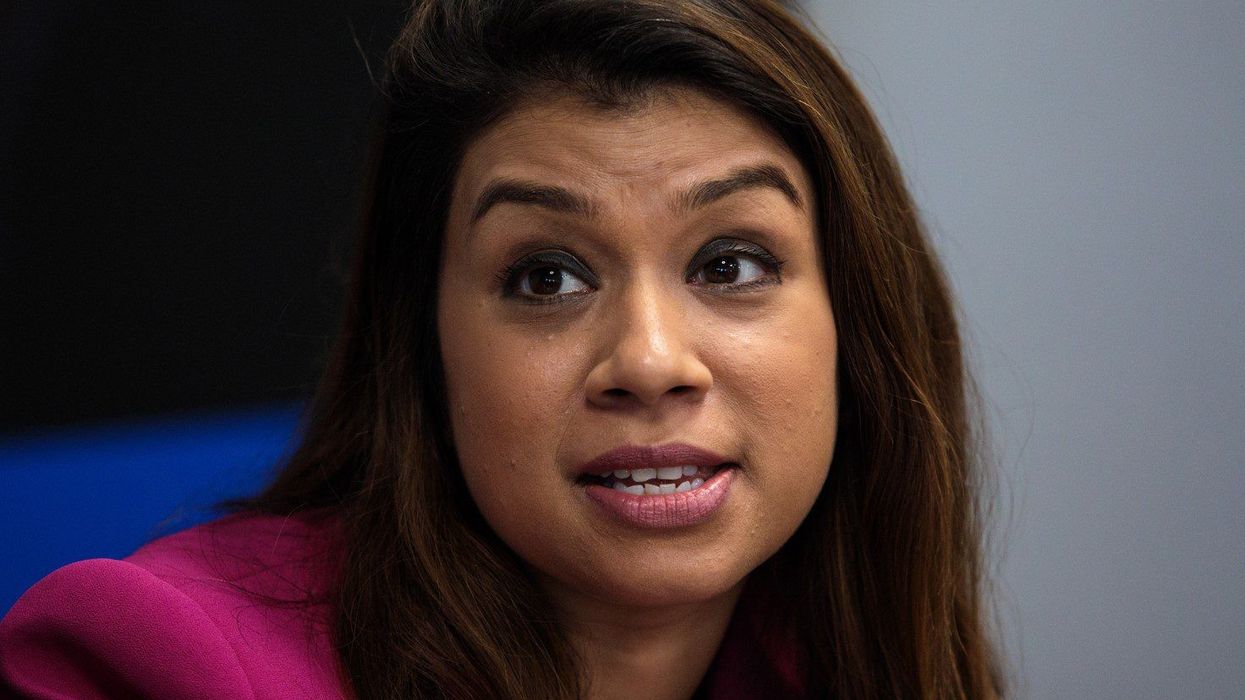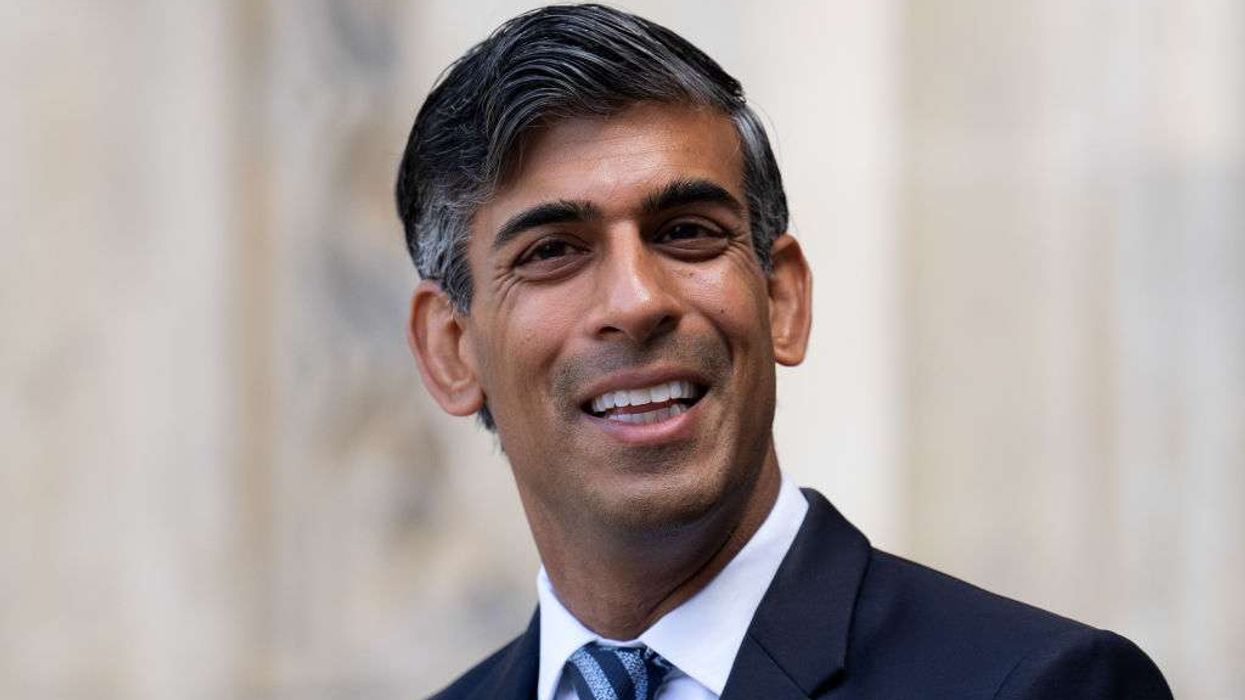ACE WRITER TAHIRA KASHYAP KHURRANA TALKS ABOUT HER INSPIRING NEW BOOK
by ASJAD NAZIR
A BOOK that a lot of people, including big named movie stars, have been talking about in recent months is The 12 Commandments Of Being A Woman by Tahira Kashyap Khurrana.
The talented Indian writer has detailed her action-packed life in a searingly honest book that offers up plenty of lessons, triggers varied emotions, makes you think and shows she is an important voice that needs to be heard globally. The talented writer’s fourth book also demonstrates there is a lot more to her than being the wife of A-list movie star Ayushmann Khurrana, who was the only south Asian celebrity to make it into Time magazine’s 2020 list of 100 most influential people globally.
With a directorial debut on the way and more fabulous writing, that voice, which is drawing so much attention with her new book, is only set to get louder and is one to listen to in 2021.
Eastern Eye caught up with Tahira Kashyap Khurrana to discuss her new book, forthcoming film, fearless approach to life, future plans and finding inner strength.
Did lockdown help or hinder your creativity?
The lockdown did help me, in fact. I had made a small decision that I am going to add value even in a pandemic. A little pressure always helps and thus I started with my online series Lockdown Tales, which received a really good response. Thereafter, I also finished the manuscript for my fourth book.
What led you towards writing your new book?
I am very fond of writing. I have been writing for my social media and a few articles here and there. Chiki (Sarkar), who is the publisher for Juggernaut, got in touch with me for a collaboration. Then, we brainstormed ideas about what to write on. We thought a lot and ideas kept flowing in. Then I wrote a chapter, which is the first chapter of the book, where I shared my struggles with periods and bras when I was a gawky teenager, and she loved it.
What happened next?
Chiki asked me if I had more of such anecdotes and I told her my life is full of such incidents. Then I started sharing these incidents and writing the book from the perspective of being a woman, and yet with quirky experiences at every stage. Whether it were my experiences when I was 10, 14, 20, or 30, and of being an adolescent to a teenager, a career-driven lady, then a married woman, and finally, a mother, I enjoyed writing about them through different lenses of being a woman.
What was the biggest challenge you faced while writing the book?
The biggest challenge was going back in time when I actually experienced an incident because it was so intense then, as funny and awkward as it may sound now. But I have always been a goofball, and when challenges come in a goofball’s life, in retrospect, they are always funny. But, it was all good.
You always come across as fearless. Is that the case and does that help when writing a book like this?
I have become fearless. I wasn’t always like this. I was just the opposite of it. It has taken a whole lot of learning and working on myself to come to behave in this manner. Any philosophy that helps you become empowered, one should adopt that. Nichiren’s Buddhism has helped me and I’ve been chanting a lot. Yes, there has been a surge of courage that has come to me lately. And, now it comes across not just in my books, but also through any medium, whether it’s the kind of scripts I am writing, pictures I’m posting or what I’m writing as a column or as a book. It’s coming across everywhere and it’s very empowering. That’s how we are meant to live our lives – in a fearless and loving manner.
There are a lot of personal revelations in the book. Is it difficult to be so honest with a book or does it in a way help you?
Yes, there’s stuff as personal as it can get. It’s personal to a level that people are enjoying it, but my family members are having palpitations! So, now when I enter my living room, they all zip up (Laughs). Because now, whatever they say becomes material for me to write about. But, it’s good to be honest. Like I mentioned, it’s empowering. It’s helping me in a way to learn more about myself and share myself to the world. It’s letting down your guard and that’s the most comfortable you can be. It’s an organic way of living and I quite like that.
Did you learn anything new about yourself while writing the book?
Yes, I learned a lot. I have no limits to being obnoxious while writing the book, if I was to learn about myself. I really let go. Perhaps, while talking I may not have, but while writing I really pushed it. And I don’t regret it. In fact, I am quite amazed at how I quite went in-depth about writing. That’s something new I learnt about myself.
Who are you hoping connects with the book?
I am hoping it connects with everyone, both men and women. With women, of course, because of the experiences since it comes from a very honest space and I hope women across ages relate to it. And also, men, who are intrigued by how women feel, behave, act, and what all they go through – all these in a fun and quirky space.
How much do you and your husband Ayushmann Khurrana discuss work at home?
My husband and I discuss work because it’s our hobby and our passion as well. It is not that we get down to discussing projects, but we love discussing the medium of art. Whether it’s a good show, a movie we have seen or good music that we have heard, we introduce it to each other. We are very fortunate that our work is our hobby and our hobby and passion is our work.
Today, what is it that inspires you creatively?
Today, what inspires me creatively is any good piece of art. Whether it’s a painting, a show I’ve watched or a book I’ve read, they all inspire me. But what always works is music. So, I could be listening to music, but I go into a zone and then I start thinking, processing and creating things in my head. So yes, that really helps me a lot.
From where do you find your inner strength on difficult days?
I find inner strength from chanting. I spoke a little bit about it earlier. I practise Nichiren’s Buddhism on all the days; difficult or not so difficult. I try to connect, root and gravitate myself and this practice really helps me to overcome all the difficulties I face.
What is the master plan that you have going forward?
There’s no masterplan going forward. The best master plan could be to live each day happily and positively. I think that’s a big battle in itself to really stay in good spirits on an everyday basis and it’s going to be my master plan for the rest of my life. But yes, otherwise, I intend to work, write more books, make more films. There’s where it’s all headed.
What kind of content can we expect from your directorial debut?
You can expect a lot of stuff written about women again, in my directorial debut. I am obsessed with them because there’s so little written, seen and spoken about them. The stories written have become stereotypical because there’s less amount of work in and around them. Either you have revolutionaries, or women who are tragedy queens. We can be all of that; we could be revolutionaries or have tragedies we are overcoming. But we are a lot in between. We are fun, quirky, crazy and have different ways to cope with a situation. I think my directorial debut will have a whole lot of women and a whole lot of craziness in it.
Why should we pick up your new book?
You should pick up my new book because it is something that I feel you would be able to connect with. Whether you are a teenager, or a working woman, wife or a mother, you will be able to relate to some of the aspects in the book and have a good laugh too. It’s a funny book! I wish everybody enjoys reading it as much as I enjoyed writing it.
The 12 Commandments Of Being A Woman by Tahira Kashyap Khurrana is out now.
Instagram: @tahirakashyap
‘














